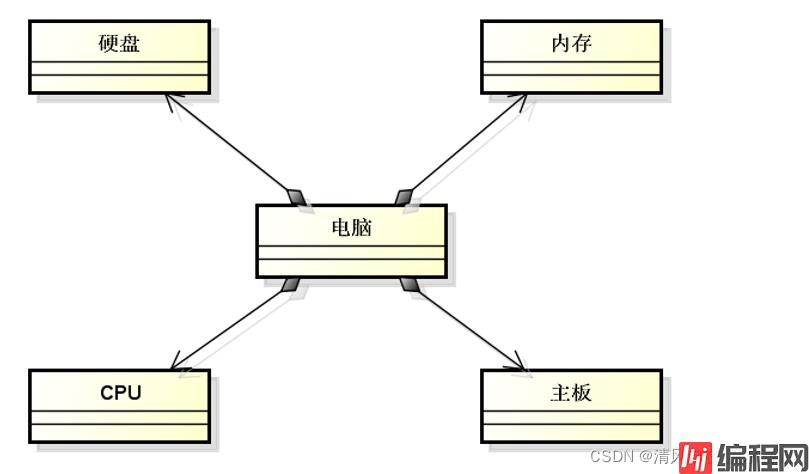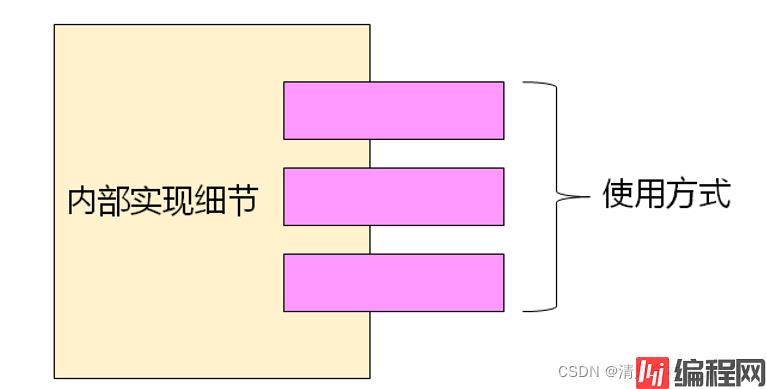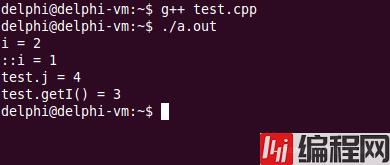目录一、类的组合二、类的封装三、类成员的作用域四、小结一、类的组合 电脑一般而言是由 CPU,内存,主板,键盘和硬盘等部件组合而成。 二、类的封装 类通常分为以下两个部分 类的实现
电脑一般而言是由 CPU,内存,主板,键盘和硬盘等部件组合而成。

类通常分为以下两个部分

例:
普通用户使用手机
手机开发工程师
封装的基本概念
根据经验:并不是类的每个属性都是对外公开的
而一些类的属性是对外公开的
必须在类的表示法中定义属性和行为的公开级别
c++中类的封装
public
private
下面看一段类成员的访问属性的代码:
#include <stdio.h>
struct Biology
{
bool living;
};
struct Animal : Biology
{
bool movable;
void findFood()
{
}
};
struct Human : Animal
{
void sleep()
{
printf("I'm sleeping...\n");
}
void work()
{
printf("I'm working...\n");
}
};
struct Girl : Human
{
private:
int age;
int weight;
public:
void print()
{
age = 22;
weight = 48;
printf("I'm a girl, I'm %d years old.\n", age);
printf("My weight is %d kg.\n", weight);
}
};
struct Boy : Human
{
private:
int height;
int salary;
public:
int age;
int weight;
void print()
{
height = 175;
salary = 9000;
printf("I'm a boy, my height is %d cm.\n", height);
printf("My salary is %d RMB.\n", salary);
}
};
int main()
{
Girl g;
Boy b;
g.print();
b.age = 19;
b.weight = 120;
//b.height = 180;
b.print();
return 0;
}下面为输出结果:

注意:如果我们访问 boy 里面的 height,因为是 private,所以编译时就会报如下错误:

类成员的作用域
注:C++ 中用 struct 定义的类中所有成员默认为 public
下面看一段类成员的作用域的代码:
#include <stdio.h>
int i = 1;
struct Test
{
private:
int i;
public:
int j;
int getI()
{
i = 3;
return i;
}
};
int main()
{
int i = 2;
Test test;
test.j = 4;
printf("i = %d\n", i); // i = 2;
printf("::i = %d\n", ::i); // ::i = 1;
// printf("test.i = %d\n", test.i); // Error
printf("test.j = %d\n", test.j); // test.j = 4
printf("test.getI() = %d\n", test.getI()); // test.getI() = 3
return 0;
}下面为输出结果:

::i 意味着访问默认命名空间中的 i 变量,默认的命名空间就是全局作用域。
到此这篇关于C++ 深入讲解类与封装的概念与使用的文章就介绍到这了,更多相关C++ 类与封装内容请搜索编程网以前的文章或继续浏览下面的相关文章希望大家以后多多支持编程网!
--结束END--
本文标题: C++深入讲解类与封装的概念与使用
本文链接: https://lsjlt.com/news/146637.html(转载时请注明来源链接)
有问题或投稿请发送至: 邮箱/279061341@qq.com QQ/279061341
2024-03-01
2024-03-01
2024-02-29
2024-02-29
2024-02-29
2024-02-29
2024-02-29
2024-02-29
2024-02-29
2024-02-29
回答
回答
回答
回答
回答
回答
回答
回答
回答
回答
0